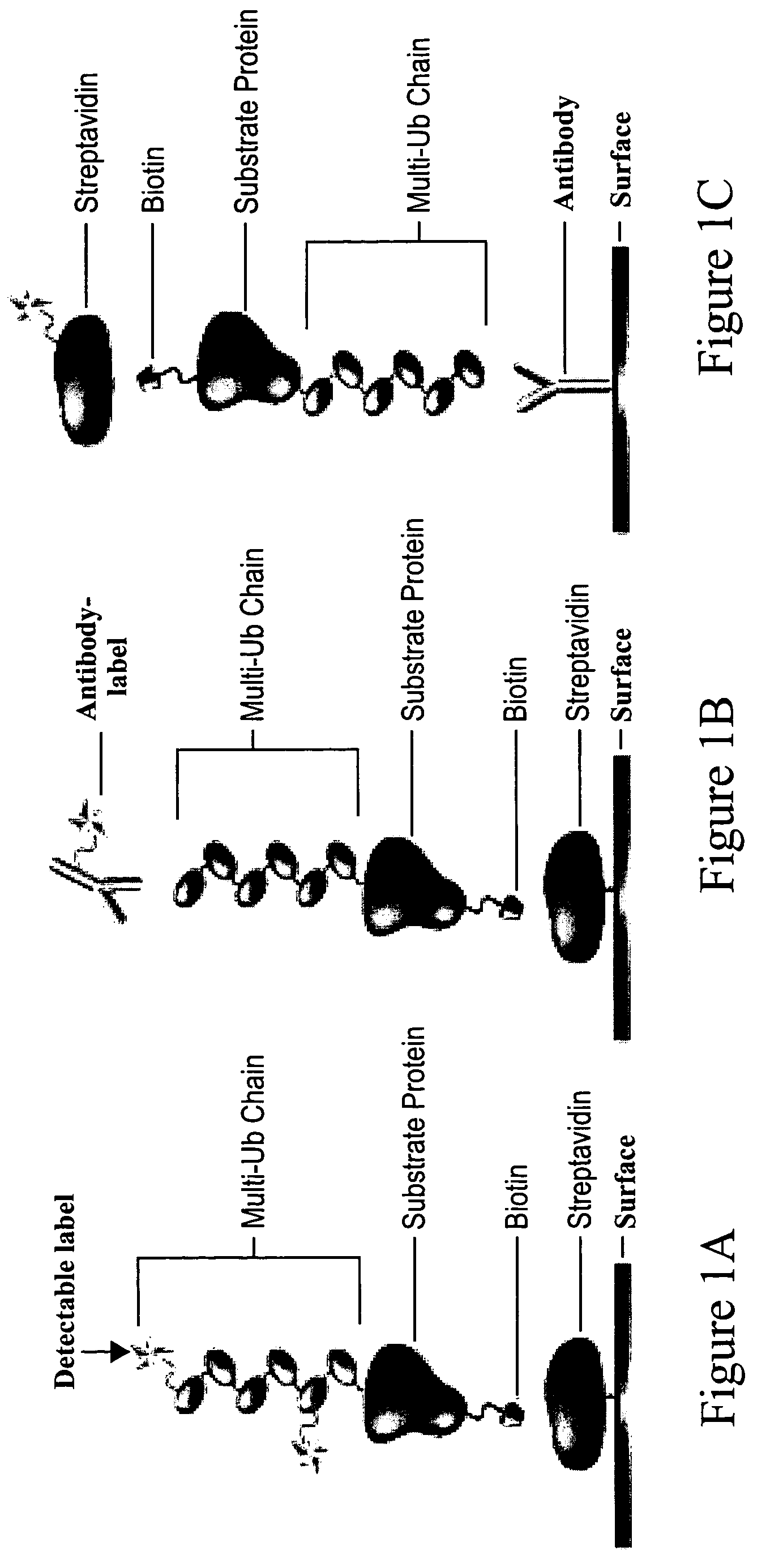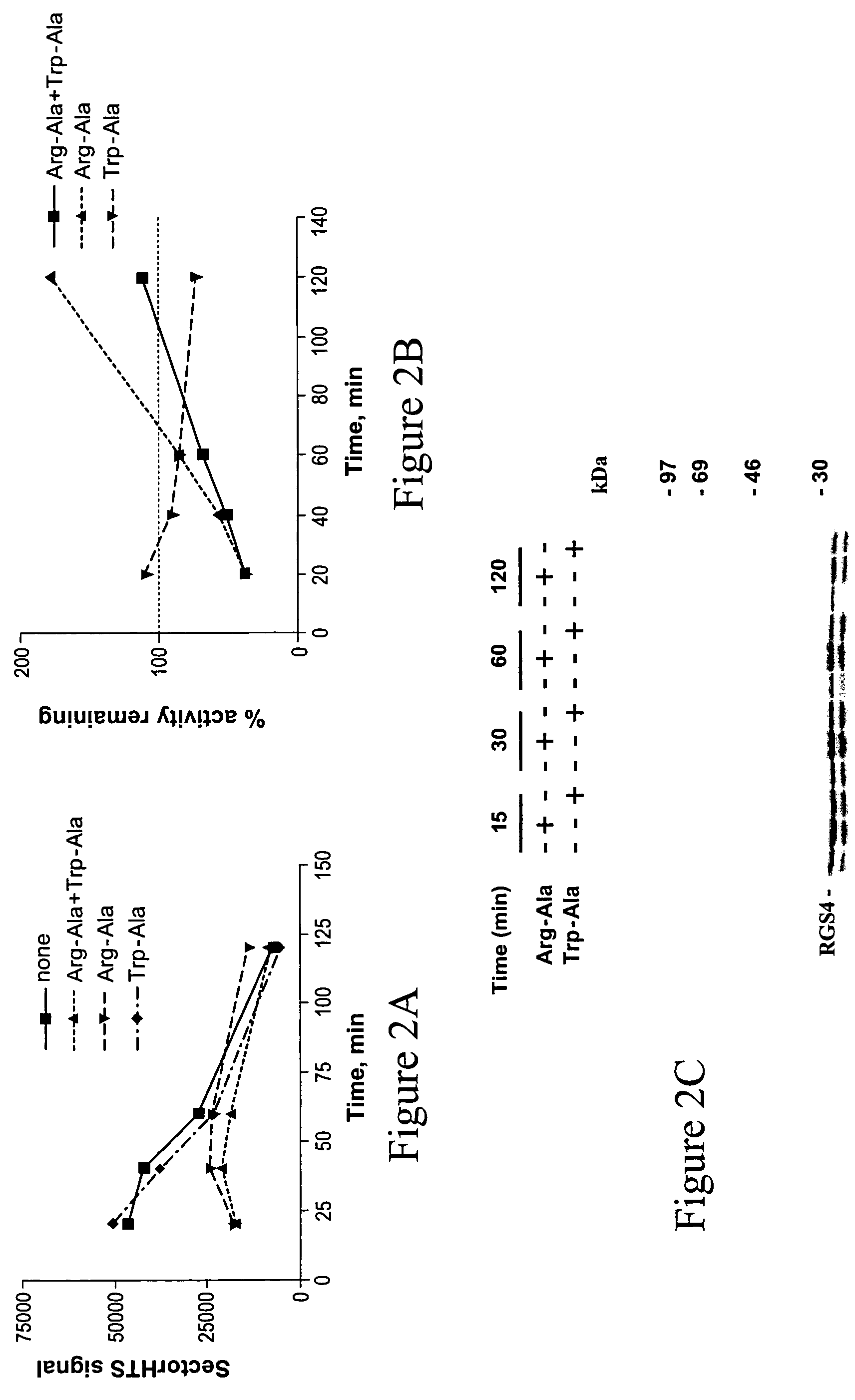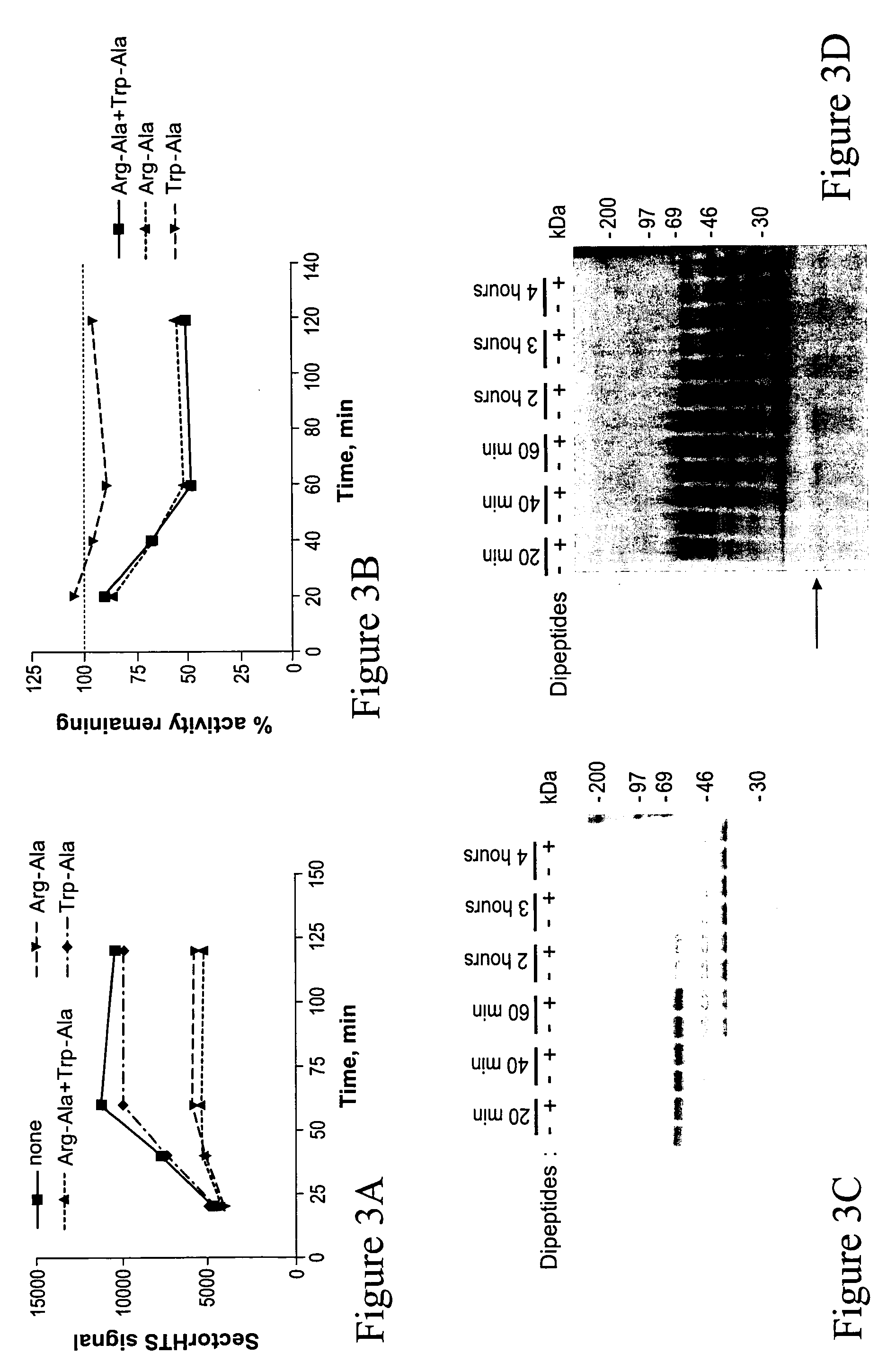Substrates of N-end rule ubiquitylation and methods for measuring the ubiquitylation of these substrates
- Summary
- Abstract
- Description
- Claims
- Application Information
AI Technical Summary
Benefits of technology
Problems solved by technology
Method used
Image
Examples
example 1
RGS4 a Known N-End Rule Ubiquitylation Substrate is Confirmed as an N-End Rule Substrate
[0197]RGS4 was produced and characterized as an N-end rule substrate as described in the Materials and Methods section. RGS4 is a known Type I N-end rule ubiquitylation substrate (Davydov and Varshavsky, 2000, J. Biol. Chem., 275: 22931).
[0198]FIG. 2(A) shows the time course of the accumulation of ubiquitylated RGS4. FIG. 2(B) shows the % of RGS4 ubiquitylation in the presence of specific N-end rule inhibitors compared to the reaction in the absence of the inhibitors. FIGS. 2(A) and (B) show that the mixture of Arg-β-Ala and Trp-Ala dipeptides and Arg-β-Ala alone (Type I inhibitor) inhibit RGS4 ubiquitylation to a similar extent, while Trp-Ala alone (Type II inhibitor) has little to no effect. These results identify RGS4 as a Type 1 substrate for an N-end rule ubiquitylation pathway.
[0199]The autoradiogram pictured in FIG. 2(C) indicates that N-end rule ubiquitylation of RGS4 most likely proceeds...
example 2
Microtubule-Associated Protein Tau is an N-End Rule Ubiquitylation Substrate
[0200]Microtubule-Associated Protein Tau (MAPT, tau) was produced using IMAGE clone #4448167 and analyzed for its ability to act as an N-end rule substrate by ECL assay and by gel electrophoresis as described in the Materials and Methods.
[0201]FIG. 3(A) shows the time course of the accumulation of ubiquitylated tau. FIG. 3(B) shows the % of tau ubiquitylation in the presence of specific N-end rule inhibitors compared to the reaction in the absence of the inhibitors. FIGS. 3(A) and (B) show that the mixture of Arg-β-Ala and Trp-Ala dipeptides and Arg-β-Ala alone (Type I inhibitor) inhibit tau ubiquitylation to a similar extent, while Trp-Ala alone (Type II inhibitor) has little to no effect. These results identify tau as a Type 1 substrate for an N-end rule ubiquitylation pathway.
[0202]The autoradiograms pictured in FIGS. 3(C) and 3(D) indicate that N-end rule ubiquitylation of tau most likely proceeds after ...
example 3
Aprataxin is an N-End Rule Ubiquitylation Substrate
[0203]Aprataxin was produced using IMAGE clone #3994375 and analyzed for its ability to act as an N-end rule substrate by ECL assay and by gel electrophoresis as described in the Materials and Methods.
[0204]FIG. 4(A) shows the time course of the accumulation of ubiquitylated aprataxin. FIG. 4(B) shows the % of aprataxin ubiquitylation in the presence of specific N-end rule inhibitors compared to the reaction in the absence of the inhibitors. FIGS. 4(A) and (B) show that the mixture of Arg-β-Ala and Trp-Ala dipeptides and Arg-β-Ala alone (Type I inhibitor) inhibit aprataxin ubiquitylation to a similar extent, while Trp-Ala alone (Type II inhibitor) has little to no effect. These results identify aprataxin as a Type 1 substrate for an N-end rule ubiquitylation pathway.
[0205]FIG. 4(A) also shows that, at equivalent concentrations, bivalent peptide inhibitor 2 provides better inhibition of aprataxin ubiquitylation than the mixture of Ar...
PUM
| Property | Measurement | Unit |
|---|---|---|
| Fraction | aaaaa | aaaaa |
Abstract
Description
Claims
Application Information
 Login to View More
Login to View More - R&D
- Intellectual Property
- Life Sciences
- Materials
- Tech Scout
- Unparalleled Data Quality
- Higher Quality Content
- 60% Fewer Hallucinations
Browse by: Latest US Patents, China's latest patents, Technical Efficacy Thesaurus, Application Domain, Technology Topic, Popular Technical Reports.
© 2025 PatSnap. All rights reserved.Legal|Privacy policy|Modern Slavery Act Transparency Statement|Sitemap|About US| Contact US: help@patsnap.com



